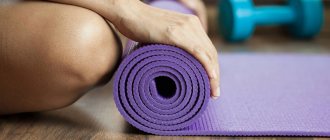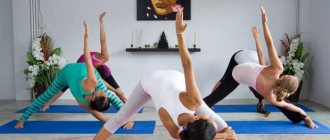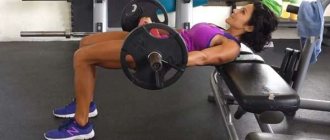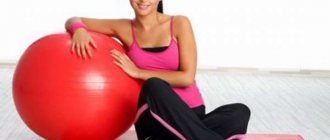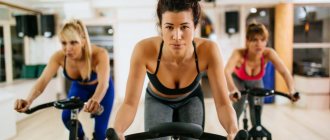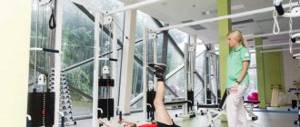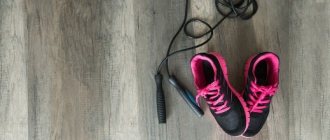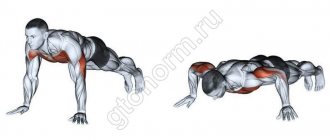If you are a complete beginner in yoga and are just starting to get acquainted with the basics of conducting home classes, you probably have a lot of questions. Where to start getting acquainted with the art of yoga, what asanas (exercises) to perform in the first stages of yoga at home, how to do them correctly and when, as well as many other questions. We will try to answer the basic and fundamental questions and introduce a beginner who has decided to practice yoga at home.
Positive effects of yoga classes on the body
The positive effects of yoga can be felt by anyone who devotes at least a couple of hours a week to it. After 1.5-2 weeks of regular yoga practice, you will be able to reduce or completely get rid of back pain, since most yoga asanas are aimed specifically at supporting the proper functioning of the spine. Moreover, yoga exercises improve the functioning of body systems, such as cardiovascular, endocrine, digestive, respiratory, etc. Due to the development of the cardiovascular system, doing yoga will reduce the likelihood of heart disease.
Regular home and group yoga classes will speed up metabolism and boost the immune system, which will increase the body's resistance to various diseases, especially in the off-season.
If you are not particularly flexible and graceful, then yoga exercises will not only make your body more flexible and flexible, but will also help correct and maintain correct posture. Yoga lessons also have a positive effect on gait, making it smoother and more graceful.
Agree, in our hectic times it is very difficult to maintain composure and always remain calm and confident, but yoga classes will help you with these nuances. After a set of yoga exercises, you will feel a surge of vital energy, become less irritable and susceptible to stressful situations. You will also gain spiritual lightness and get rid of difficult thoughts and experiences.
As you can see, yoga affects the entire body and in order to experience all these positive qualities of yoga, you need to regularly perform sets of exercises, and also if you decide to do yoga at home, then you need to know the nuances of doing yoga at home.
Home yoga for beginners – where to start?
There is no secret, just start practicing, not tomorrow, not on Monday, but right now, well, if you really decide to do yoga at home. To prepare your body for yoga, you need to start with the basics, namely with simple sets of asanas that you can perform on your own at home without the help of a trainer. Such sets of exercises for yoga will take no more than 15-20 minutes, but at the same time they will prepare your body for stress, and will also teach you to be systematic, and as you understand, systematic yoga practice is very important, as in any sport.
Another nuance for practicing yoga at home is silence and a designated comfortable, warm and clean place for practicing. If you are new to yoga and your household is not accustomed to the schedule of your classes, warn and tearfully ask them not to distract you while you are doing the exercises, even if it seems to them that you are just sitting on the carpet and doing nothing. Turn off your phones, remove pets from the room, in a word, get rid of everything for a while that could distract you from doing yoga; this is perhaps the biggest problem when organizing home yoga.
What do you need to have to practice yoga at home?
And so you decided to practice yoga at home, it’s good that you need to purchase a special yoga mat for practicing, it will help make your home classes more comfortable and convenient. If you don’t have a rug, it doesn’t matter, you can do without it. You will also need a blanket; you probably have a warm blanket at home that will keep you warm during meditation and relaxation.
Later, when you master the initial asanas in yoga, you will need two blocks and a yoga belt, but in the first stages you can do without them. Also, what is useful for yoga, whether you are a beginner or have already encountered more complex asanas, you need comfortable clothes that will not hinder movement, it is better if it is clothes made from natural fabrics, which will allow you to get even closer to complete comfort. As you can see, to practice yoga at home, you need very few available tools and a lot of desire and perseverance.
Intermediate and advanced level of hatha yoga
Having mastered the elementary poses, you can begin complex variations. Hatha yoga poses are practiced by experienced amateurs.
Downward facing dog pose (in Sanskrit - adho mukha svanasana).
- To achieve the pose, you need to stand with your feet on the floor or carpet, lean forward with emphasis on your hands (upper and lower limbs straight, knees not bent, neck and head relaxed). From the outside, the arms should appear to be an extension of the body, i.e. form one line.
- The optimal duration of the asana is 60 seconds. Exercise helps relieve headaches and is an excellent preventive measure for arthritis.
Warrior Pose (Virabhadrasana). From the side, it resembles a lunge with your foot forward, which is typical for traditional aerobics.
- The entrance to the asana begins from the “Mountain” position. The arms are raised above the head, palms clasped. Take a wide step forward with one leg (100-120 cm), bend your knee at an angle of 90 degrees. The thigh muscles are parallel to the plane of the floor. The head is slightly tilted back, the gaze is focused on one point and directed upward. Hold the asana for 30-40 seconds.
Crane Pose (Bakasana). A wonderful tool for training arm muscles. Effectively replaces standard push-ups.
- Starting position: squat down, extend your arms forward and rest them on the floor. Slowly transfer your body weight and center of gravity to your arms, lifting your legs and pelvis off the floor. The result is a handstand that resembles the movement of a crane moving through water.
How much time should you set aside for doing yoga at home?
How much time to devote to home yoga classes is up to you, taking into account your desire, schedule and workload of the day. In any case, it is necessary to create a training schedule that you must adhere to, otherwise you may abandon what you started after a few sessions. Of course, the ideal option would be to conduct home yoga every day for an hour; it will also be more effective than practicing yoga for 2-2.5 hours but once every two or three days.
You should not immediately conduct too long classes of 2 hours or more, this can also reduce your interest in the future, as they say, you can burn out. In the initial stages, you can start with a 15-30 minute session, as the muscles and the body as a whole begin to get used to the loads, you can gradually increase the time. In general, the most favorable periods of time for practicing yoga are 15 minutes, 30 minutes, 45 minutes, 1 hour and 1.5 hours. But there are also those who practice yoga almost throughout the day; one way or another, approach yoga as a pleasure and a pleasant effect on the body and body as a whole.
Planning a personal practice at home
In general, when starting to plan LP, you should already understand the basic principles of body alignment asanas, feel your body and know about its features and imbalances. In principle, in any kind of practice, it is important to know and take into account personal limitations and characteristics, which are important to communicate to the instructor.
Again, you shouldn’t limit yourself to personal practice at home either; an outside perspective is sometimes very useful, because we ourselves may not notice a lot, regardless of experience. And it is sometimes useful to infuse something new into, even pleasant, but established old ones. Focus and presence of mind are dulled when we walk in familiar circles.
So where is the best place to start?
Tips and rules for organizing home yoga classes
- When practicing yoga at home, be sure to make sure that the room is warm and free of drafts, since you should not freeze while practicing yoga. This is due to the fact that in a cold room it is more difficult for muscles and ligaments to warm up, which leads to incorrect and less effective exercises, as well as the risk of spraining ligaments and muscles.
- To conduct a yoga complex at home, take care of complete silence and tranquility; nothing should distract or irritate you. If you are blinded by bright light, you can put a blindfold on your eyes; if there is still extraneous noise, you can insert earplugs into your ears.
- When performing asanas, especially if you are doing it for the first time, do not try to bring the poses to perfection through pain; at the initial stage they can be performed with incomplete amplitude. This will reduce the risk of injury, and will also gradually prepare the ligaments, joints and muscles for the final position. The main thing in yoga is perseverance and patience; mistakes will be corrected as you master the technique.
- Start the exercise only in the absence of physical or psychological stress; you should feel cheerful and in a relaxed state. If you are depressed or worried about something, do savasana, the so-called corpse pose. In which you need to achieve maximum relaxation and drive away all disturbing thoughts. By the way, you can end a yoga class with an asana like shavasana.
- Of course, in the initial stages of home yoga, you need to learn how to perform asanas correctly, but do not forget about relaxation and even and continuous breathing.
- In the intervals between asanas, relax those muscles as much as possible, since when performing a certain asana, muscle contraction occurs, which should subsequently be replaced by relaxation, for example in shavasana. A minute's rest will be enough during which you relax your muscles and perform several calm breathing cycles, which will also restore your heartbeat.
- Try to perform asanas at a slow pace, balancing and maintaining balance, movements should be as smooth as possible. However, make sure that the body remains stable and does not sway from side to side.
- Be sure to start your home yoga class with the mindset that you will succeed. Choose a few simple asanas that you can master with ease and practice them each time, honing your technique. With each new workout, try to perform the asanas more deeply and stay in this position a little longer than the last time, this way you can develop your body more effectively.
- Each asana should be performed at a slow pace, going through three stages: entering the asana, staying in a fixed position, and returning to the starting position. Do not try to quickly enter the final position of the asana; slowly and gradually first master its intermediate positions.
- While you are doing yoga training at home, try to avoid rushing and if you have already started the lesson at a measured, rather slow pace, then bring the workout to the end without trying to finish it quickly. If, nevertheless, time does not wait, in this case, reduce the training not by increasing the speed of the exercises, but by reducing their number. You can also reduce the number of repetitions of each asana, but you should not reduce the time spent in one or another asana.
- When conducting yoga training at home, try to concentrate your attention on what you are doing, and not fly with your thoughts in the clouds; when performing each stage of the asana, your attention should be concentrated on movement and correct, calm breathing.
- Only after you have completely mastered the initial, non-complex asanas and your body has acquired sufficient flexibility, can you move on to more complex asanas, which should also be mastered gradually. You can hold difficult asanas in the first stages for a few seconds, increasing the time spent in it with each training session. However, when you begin to master complex yoga exercises, you should not forget about the initial asanas that you have already mastered; for you at this stage they are the most effective, while you are just beginning to master complex poses.
- When you have reached the final position of the exercise, hold it for as long as possible, while remaining motionless. If you have performed the asanas correctly and are relaxed in both your thoughts and body, then after completing the practice you should feel good and light. If, while in a pose, you feel anxiety or discomfort, then leave the asana without delay.
- After you have lingered in the final position of the asana, begin to slowly exit the pose, just as when entering the asana, return to the starting position at a very slow pace.
- Repeat each asana 4-6 times; if you are already able to follow the technique of performing and holding the asana, the number of repetitions can be reduced.
- However, performing asanas is not the last thing you should learn; one of the main points in yoga is mastering the correct breathing technique (pranayama) and mastering meditation, which should end each yoga session. Read about this in our next articles.
- It is better to do yoga on an empty stomach, therefore, for home yoga, early in the morning immediately after waking up is suitable, this will also allow you to practice with a fresh mind without having heavy thoughts and experiences that can accumulate during the day. If you nevertheless decide to practice during the day or in the evening, then you should conduct a home yoga workout no earlier than 2-4 hours after eating. Before practicing yoga, you should drink some water, green tea or natural juice, and you can also allow yourself a couple of sips of warm milk. Between performing asanas, you can also drink a couple of sips of water.
- After classes, you should not engage in vigorous activities; you should also take a shower before, and not after, yoga classes. This is due to the fact that during yoga exercises, long-term changes in blood circulation occur in the body, which should gradually return to normal functioning.
What you need to do exercises for beginner yogis
To perform asanas on your own, you will need a very small set of accessories. First of all, purchase a mat made of polyurethane foam; it is important that it is soft enough, but at the same time elastic, and does not slip on the floor. The convenience of your activities depends on the quality of this accessory. You will also need loose, light clothing - you can give preference to natural materials or buy special sportswear made from modern high-tech fabrics - they will not allow the body to overheat, since they evaporate all excess moisture, and when washed they do not lose their properties and appearance.
Before starting asanas, choose a suitable set of yoga exercises for beginners. Don’t try to master the most difficult poses from the very first day, because your task is to gradually improve your body and spirit. In the initial stages, do the simplest exercises, spend most of your time on proper breathing and meditation, which is necessary to achieve a relaxed state.
An important advantage of yoga at home is the fact that you can practice at any time convenient for you. At the same time, regular practice will soon bear fruit.
Experts at the Witch's Happiness store recommend:
Yellow twisted candle with herbs “Calmness and strength” Wax candle with herbs
270 rub.
buy
Georg Feuerstein “Psychology of Yoga. Combining Eastern and Western approaches to the study of the mind" Yoga and psychoanalysis
530 rub.
buy
Swami Vishnudevananda "Yoga: A Complete Illustrated Guide" Classic yoga tutorial
693 rub.
buy
To perform exercises for weight loss and any yoga for beginners, you need to prepare the room: tidy, ventilate, and it is desirable that the temperature is comfortable for you. A shady, quiet room would be a good option, because sharp sounds and bright light interfere with self-immersion and proper exercise.
Relaxing, quiet music or recordings of natural sounds, such as the sound of the surf, forests, and singing, are suitable as a background. But this option is only suitable for those who already know all the asanas from the lesson. If you opted for exercises for beginner yogis, recorded on disks or posted on the Internet, then they are usually already accompanied by music.
To practice yoga at home, you will need privacy, so close the doors and ask your loved ones not to disturb you, or try to practice while you are alone.
Here are a few more rules you need to know before starting classes:
- Yoga is a set of asanas in a certain sequence. Any set of exercises for beginner yogis ends with a resting pose - shavasana. During this activity, the body remains motionless for 10–15 minutes. During this time, the body relaxes and rests as much as possible, and the brain reboots.
- You shouldn't feel pain doing simple yoga exercises for beginners. We are not talking about sports, so there is no need to specifically stretch muscles, bend over with force, or endure unpleasant sensations. If you're a beginner, remember that you're just getting started with your body, and it takes time.
Take your time and you will soon feel more flexible. As soon as any unpleasant sensations arise, reduce the effort or even gently exit the asana.
- Before you start yoga, we recommend doing a short warm-up - it will warm up your muscles.
- Control your breathing during exercises for beginner yogis, let it be even. Avoid delays; inhalations and exits should be as deep and slow as possible.
To make it easier for you as a beginner to perform asanas, remember:
- Yoga can only be done on an empty stomach. It's best in the morning, as soon as you wake up and take a shower. Or wait until 3-4 hours have passed after breakfast or lunch.
- Let us repeat that it is best for beginner yogis to practice exercises in the morning, and the ideal time for yoga is at 5 or 6 in the morning. This is due to the characteristics of our body: it receives additional, including healing, energy when it wakes up with nature.
You will soon notice that the day after yoga turns out completely differently. You will have the strength and desire to do everything, and tasks will begin to be solved easily. Agree, there is no need to recharge your energy before bed when you can use it all day.
- Prepare the room for exercises for beginner yogis: ventilate it, you can briefly light an incense stick or dilute a little essential oil in water to freshen the air, wash the floor.
- Wear comfortable, preferably white cotton clothes. You also need socks for relaxation. During exercises for beginner yogis, avoid chains, watches, and jewelry with convex stones, as they can interfere and even injure. Throw your long hair into a bun or yoga cap.
Some people consider the cap to be a sectarian accessory, but this is not so. First of all, it holds the hair, helping not to be distracted during practice. Just try wearing it and you will feel the difference yourself.
- During menstruation, it is better for women to abandon inverted poses, such as shoulder stand, plow pose. During the first three days, avoid beginner yoga abdominal exercises and active abdominal breathing (breath of fire) as they increase bleeding. If this side effect does not bother you, you can leave these asanas, but do them more slowly and not for as long as usual.
- There is a special yoga for pregnant women - it is worth replacing your usual activities.
Is it possible to lose weight with yoga?
If you want to quickly lose weight with the help of home yoga, then I hasten to disappoint you. Yoga is not the best or fastest way to lose weight. Of course, without a doubt, yoga can increase metabolic processes in the body, which will allow you to lose extra pounds, but this process is very lengthy. The effect on your figure from yoga should not be expected within a few weeks; months of practice must pass before you notice changes in your figure. However, to increase the effect of home yoga for weight loss, follow the principles of proper nutrition, lead an active lifestyle and conduct regular yoga sessions.
Initial asanas (exercises) that can be performed at home
- Tree Pose (Vrikshasana) To perform this asana, stand up straight (Tadasana), then, while inhaling, slowly raise your arms up through your sides, palms together, fingers pointing to the ceiling. Try to move your arms back a little, while opening and straightening your chest. Bend your right leg at the knee at the beginning, resting your foot on the inner part of your left thigh as high as possible. Place your full foot on your thigh, turning your toes down. Stay in this position for a time that is comfortable for you, and then return to Tadasana. After this, perform the exercise on your left leg. The final position of this asana: the foot of the bent leg should be placed as high as possible in front of the thigh of the straight leg.
- Extended Triangle Pose (Utthita Trikonasana) To perform this exercise, you should again stand in Tadasana (straight), then breathe as deeply as possible, then jump and spread your legs about 1 meter apart, while keeping your feet parallel to each other. Stretch your arms out to the sides at shoulder level, palms down. From this position, turn your right foot 90 degrees, that is, the toe of your right foot should be turned away from you. The left leg should remain in its original position, the toe should be pointed in front of you, or slightly turned to the right (to make the exercise easier). Next, as you exhale, tilt your torso to the right, with your right palm completely touching the floor behind your right leg (ideally). If in the first stages it is difficult for you to touch the floor, you can place your palm on the ankle of your right leg or in front of it on the floor. At the same time, extend your left hand to the ceiling, it should be perpendicular to the floor, look up at the fingers of your left hand. Thus, the arms should form a straight line perpendicular to the floor. Do not forget about breathing, breathe freely, in the initial stages of home yoga training, stay in this position for 30 to 60 seconds. As you inhale, return your body to a straight position and turn your feet in front of you, then repeat the asana on the other side.
- Child's Pose (Balasana) Kneel down, then lower your pelvis onto your heels, then take a deep breath, tilt your body forward and press your stomach and chest to the front of your thighs. Lower your forehead to the floor. When performing, the back should remain straight. Stretch your arms back, palms up. This pose can also be used to complete a morning yoga routine. Breathe smoothly and calmly, feeling how your chest works with every inhalation and exhalation. In order to exit the asana, first slowly raise your head, lifting your forehead from the floor, and then gradually lift your torso from your hips.
- Hill Pose or Downward Facing Dog Pose (Adho Mukha Svanasana) Get on all fours with your palms facing forward. Hands, knees and feet shoulder width apart. From this position, as you exhale, focusing on your palms, push your pelvis back and up so that it looks like a slide. The back should be straight and continue the line of the arms. Press your heels firmly to the floor, try not to bend your knees. Try to reach your chest toward your knees and your tailbone toward the ceiling. At the same time, try not to suck in your stomach, but relax it as much as possible. The head should also follow an even line with the back and arms.
- Chair Pose (Utkatasana) Stand up straight, spread your feet shoulder-width apart, extend your arms straight up through your sides, palms facing each other. After this, slowly bend your knees, moving your pelvis back and your body slightly forward, as if you were sitting on a chair. Your knees should not extend beyond your toes. During the exercise, the arms remain extended upward and continue in a straight line with the head and back. Hold this position as long as possible. This yoga exercise strengthens the muscles of the legs and back very well.
- Candle pose, in common parlance “birch tree” (Sarvangasana) To perform the exercise, lie on your back, stretch your arms along your body. From this position, lift your straight legs up, pull your pelvis behind your legs, while helping yourself with your palms. After your legs and pelvis are raised up and stretched towards the ceiling, try to place your palms as close to your shoulder blades as possible. Start holding this pose for 10 seconds, increasing the time with each session. You should come out of this asana as slowly and smoothly as possible, feeling how each vertebra touches the floor.
- Plow pose (Hal-asana) Lie on your back, stretch your arms along your body with your palms facing the floor. As in the previous asana, lift your straight legs up, then move them behind your head, trying to touch your toes to the floor. Keep your legs straight while doing this. If you cannot touch the floor, stay in the position to which you can bring your legs. To return to the starting position, slowly and steadily lower your legs to the floor.
- King of the Pisces Pose (Arlha Matsienlrasana) To perform this pose, sit on the floor, straighten your legs and straighten your back and shoulders. From this position, bend your right leg at the knee and bring it behind your left. At the same time, bend your left leg at the knee and bring your heel as close to your body (buttock) as possible, while trying to lower your knee as low as possible. At the initial stages, you can leave your left leg extended and bend only your right leg. Next, take the right knee with the palm of your left hand and twist (rotate) your body to the right. Perform the turn as slowly as possible while exhaling. Next, bend your left arm at the elbow and place it behind your right knee, as if holding yourself in a twisted state. As you exhale, try to twist a little more. After staying in this position for a while, slowly return to the starting position, then repeat it on the other side.
- Pigeon Pose (Eka Pada Rajkapotasana) Get on all fours, then pull your right knee to your chest and turn your foot to the left, then lower your leg to the floor. That is, the right heel should be under the left thigh. After this, extend your left leg back, lowering your pelvis down as much as possible. Next, focus on your forearms, tilting your body as much as possible and at the same time stretch your left leg back even more. The exercise should be repeated for the other leg. By the way, this asana can be used as a stretch for the splits.
- Dead pose (Shavasana) To perform this, lie on the floor, stretch your arms along your body and close your eyes, you can put a blindfold on your eyes. After this, tense the muscles of your entire body as much as possible and hold in this position for a few seconds, then relax as much as possible and focus on your breathing. Stay in this relaxed state for 4-5 minutes. You can also complete a set of yoga exercises at home with this pose or perform it between complex asanas.
You can use all of the above initial exercises (asanas) in the initial stages of home yoga training. You can use the entire set of exercises presented for home yoga or choose a few exercises that are easiest for you to master. The last option is ideal for beginners.
Warrior Pose II (Virabhadrasana II)
- Keeping your legs in Warrior I pose, open your pelvis, moving your front hip slightly forward and your back hip slightly back.
- At the same time, turn your body in the same direction as your pelvis so that they are in the same plane. Extend your arms in one line parallel to the floor. Palms face down.
- Do not lean your body towards your front thigh, but stretch straight up behind the top of your head.
- Make sure that the entire surface of your back foot is pressed firmly to the floor.
From the warrior pose we move to the triangle pose, and then to its inverted version:
Contraindications to yoga
Avoid practicing yoga, especially at home, if:
- elevated body temperature (above 37 degrees);
- ARVI, acute respiratory infections, as well as general poor health;
- exacerbation of chronic diseases;
- disorders of the cardiovascular system.
You should also not start yoga after active physical activity, after a bath or after drinking alcoholic beverages (at least a day must pass), after suffering severe stress and irritation, as well as in the first 2 days of menstruation.
General recommendations
- Exercise at home every day for 20-25 minutes. If you are a night owl by lifestyle or character, and it is more convenient for you to pay attention to yoga in the evening or during the day, that’s okay. But keep in mind that in the morning hours it is easier to come to an agreement with your body, it is more responsive to stress and quickly gains harmony and strength.
Read more in the articles “Morning Yoga” and “Yoga Before Bed.”
- Try to concentrate on the necessary movements and at the same time relax, drive away worries and worries. Is something not working out for you? It's OK! It will happen tomorrow, the day after tomorrow or in a month.
- You should not practice yoga after a heart attack or stroke, with illnesses and injuries to the joints and/or spine, with heart problems, exacerbations of chronic diseases, with colds, flu and fever, and for women - during menstruation. Yoga is contraindicated for people with cancer. Pregnant women are allowed to perform some asanas, but if you have not done yoga before pregnancy, you should not start practicing on your own on the advice of your friends.
